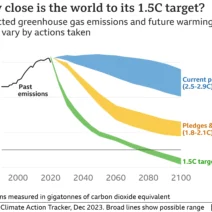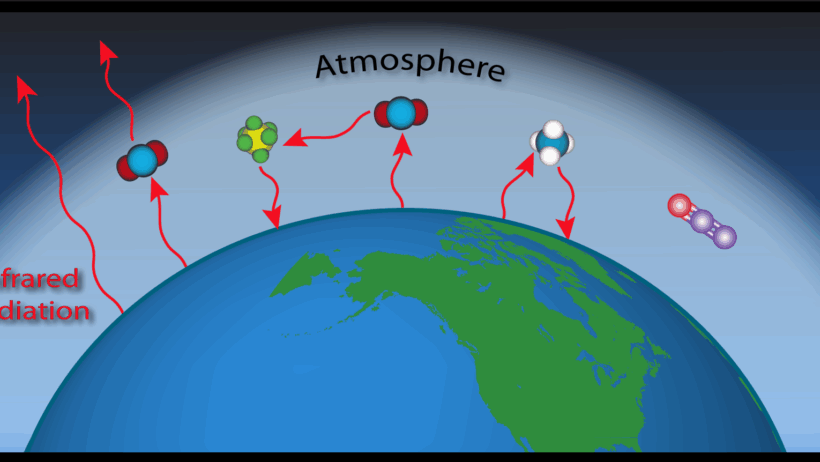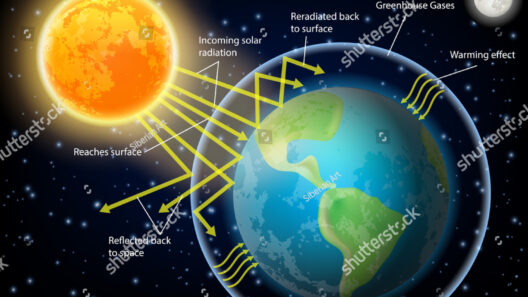The delicate balance of life on Earth hinges significantly on the greenhouse effect, a phenomenon often overshadowed by its negative connotations in discussions about climate change. To understand the essence of life-sustaining warmth on our planet, we must comprehend the role of greenhouse gases, which serve as a protective blanket, stabilizing our climate and enabling the flourishing of diverse ecosystems. Without this intrinsic mechanism, life, as we know it, would be nearly impossible.
In exploring the significance of the greenhouse effect, imagine Earth as a finely tuned instrument, each component essential to the overall symphony of existence. The greenhouse gases, including carbon dioxide, methane, and nitrous oxide, are akin to the strings that create harmony, allowing life to resonate, thrive, and evolve over millennia.
In the vast expanse of the cosmos, Earth is a small oasis, uniquely qualified to support life. The interplay between sunlight and greenhouse gases orchestrates a temperature that nurtures rather than incinerates. As sunlight reaches our planet, some is reflected back into space, while the remainder warms the surface. Greenhouse gases absorb and re-radiate this heat, ensuring that our planet maintains an average temperature conducive to life.
However, it is crucial to appreciate that the greenhouse effect is not merely a warm embrace of heat; it is a dynamic, complex process that influences weather patterns, agriculture, and the very fabric of ecosystems worldwide.
Understanding the greenhouse effect delves into the essence of ecology and the myriad organisms that coexist within their realms. From the tiniest microorganisms to towering sequoias, the interconnected web of life is contingent on the stability that greenhouse gases provide. Their role can be likened to that of a conductor guiding an orchestra, ensuring each instrument has its place in the grand composition of nature.
The importance of the greenhouse effect stretches beyond simple temperature regulation. It is a cornerstone of life’s diversity, integral to biogeochemical cycles that support plant growth, while also maintaining the delicate balance of biodiversity. Each species, in turn, contributes to a greater ecological equilibrium that fuels life across different environments.
Greenhouse gases have been demonized in recent years, primarily due to their association with fossil fuel emissions and the consequent disruption of this vital balance. However, it is essential to recognize that these gases are naturally occurring and have existed long before industrialization. The very existence of atmospheric carbon dioxide, for instance, is pivotal for photosynthesis. Plants utilize this gas to convert sunlight into energy, forming the foundation of food chains that sustain terrestrial and aquatic ecosystems alike.
Examining the roles of specific greenhouse gases elucidates further their importance for life on Earth. Carbon dioxide, often perceived negatively regarding climate change, fuels the growth of vegetation. Methane, while more potent in its warming potential, originates from natural processes, including decomposition and digestive processes in livestock, which in turn contribute to nutrient cycling within ecosystems. Even nitrous oxide plays a part, enhancing soil fertility and supporting agricultural endeavors.
The ramifications of altering the natural concentrations of these gases cannot be understated. As human activities continue to increase greenhouse gas levels beyond natural thresholds, the equilibrium upon which ecosystems depend becomes precarious. The phenomenon of global warming—a byproduct of enhanced greenhouse effects—accelerates shifts in climate patterns, disrupts habitats, and threatens biodiversity. These changes can unfurl catastrophic consequences, signaling not just a decline in species but potentially the end of entire ecosystems.
Transitioning to a sustainable future necessitates the understanding that while greenhouse gases are pivotal to life, their management and restoration require conscientious efforts. The challenge lies in fostering a balanced approach that nurtures both the air we breathe and the ecosystems we rely upon. Embracing renewable energy sources, promoting sustainable agricultural practices, and protecting carbon sinks like forests and wetlands are advancing steps toward preserving the viability of greenhouse gases.
This journey begins with awareness—recognizing that the greenhouse effect, in its true essence, is intrinsically tied to the life-sustaining processes of our planet. By acknowledging the significance of greenhouse gases, we cultivate a sense of stewardship that informs our environmental policies and ethical responsibilities towards the Earth.
In conclusion, the greenhouse effect is not merely an environmental challenge but a cornerstone of life itself. Its essence transcends temperature modulation; it fosters biodiversity and secures the ecological balances that sustain all forms of life. As stewards of this blue planet, we bear the responsibility of harmonizing human activity with the natural systems that have nurtured life for eons. By assuming this role, we don’t merely safeguard our planet but also its intricate ecosystems, ensuring that future generations thrive in a world of balance, beauty, and biodiversity.







